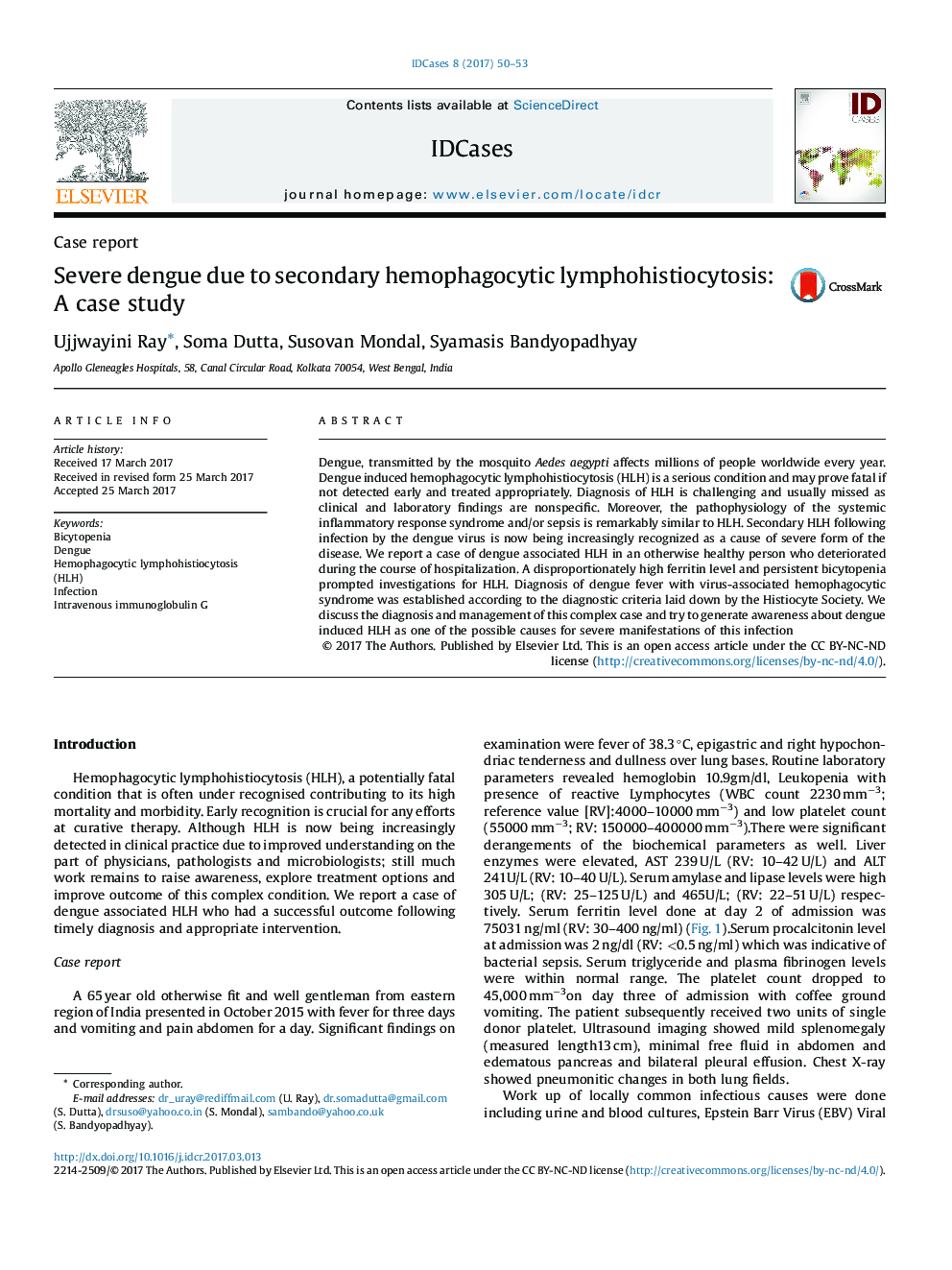| کد مقاله | کد نشریه | سال انتشار | مقاله انگلیسی | نسخه تمام متن |
|---|---|---|---|---|
| 5672274 | 1593185 | 2017 | 4 صفحه PDF | دانلود رایگان |
- Dengue induced Hemophagocytic lymphohistiocytosis (HLH), is a serious entity and can adversely affect the course of the infection.
- HLH is a potentially life threatening disorder and early diagnosis and management is crucial for successful outcome.
- A disproportionately high ferritin level should trigger investigations for HLH.
Dengue, transmitted by the mosquito Aedes aegypti affects millions of people worldwide every year. Dengue induced hemophagocytic lymphohistiocytosis (HLH) is a serious condition and may prove fatal if not detected early and treated appropriately. Diagnosis of HLH is challenging and usually missed as clinical and laboratory findings are nonspecific. Moreover, the pathophysiology of the systemic inflammatory response syndrome and/or sepsis is remarkably similar to HLH. Secondary HLH following infection by the dengue virus is now being increasingly recognized as a cause of severe form of the disease. We report a case of dengue associated HLH in an otherwise healthy person who deteriorated during the course of hospitalization. A disproportionately high ferritin level and persistent bicytopenia prompted investigations for HLH. Diagnosis of dengue fever with virus-associated hemophagocytic syndrome was established according to the diagnostic criteria laid down by the Histiocyte Society. We discuss the diagnosis and management of this complex case and try to generate awareness about dengue induced HLH as one of the possible causes for severe manifestations of this infection
Journal: IDCases - Volume 8, 2017, Pages 50-53
